Lamb Wave-Based Damage Localization Feature Enhancement and Extraction Method for Stator Insulation of Large Generators Using VMD and Wavelet Transform
Abstract
:1. Introduction
2. Principle of Locating Insulation Damage Based on Lamb Waves
3. Lamb Wave Damage Signal Enhancement and Localization Feature Extraction Method
3.1. VMD-Based Noise Reduction Method for Damage Signal
3.2. Wavelet Transform Extraction for TOF Location Features of Lamb Waves
4. Experimental Verification and Result Analysis
4.1. Experimental System
4.2. Experimental Results and Analysis
4.2.1. Test Results and Analysis for Puncture Damage
4.2.2. Surface Crack Damage Location Test Results and Analysis
5. Conclusions
Author Contributions
Funding
Conflicts of Interest
References
- Istad, M.; Runde, M.; Nysveen, A. A Review of Results from Thermal Cycling Tests of Hydrogenerator Stator Windings. IEEE Trans. Energy Convers. 2011, 26, 890–903. [Google Scholar] [CrossRef]
- Lévesque, M.; Hudon, C.; David, E. Insulation degradation analysis of stator bars subjected to slot partial discharges. In Proceedings of the 2013 IEEE Electrical Insulation Conference (EIC), Ottawa, ON, Canada, 15 July 2013; pp. 479–483. [Google Scholar]
- Sumereder, C.; Weiers, T. Significance of Defects Inside In-Service Aged Winding Insulations. IEEE Trans. Energy Convers. 2008, 23, 9–14. [Google Scholar] [CrossRef]
- Stone, G.C. Condition monitoring and diagnostics of motor and stator windings—A review. IEEE Trans. Dielectr. Electr. Insul. 2013, 20, 2073–2080. [Google Scholar] [CrossRef]
- Riera-Guasp, M.; Antonino-Daviu, J.A.; Capolino, G.-A. Advances in Electrical Machine, Power Electronic, and Drive Condition Monitoring and Fault Detection: State of the Art. IEEE Trans. Ind. Electron. 2015, 62, 1746–1759. [Google Scholar] [CrossRef]
- Xia, H.; Xia, Y.; Ye, Y.; Qian, L.; Shi, G. Simultaneous Wireless Strain Sensing and Energy Harvesting from Multiple Piezo-Patches for Structural Health Monitoring Applications. IEEE Trans. Ind. Electron. 2018, 66, 8235–8243. [Google Scholar] [CrossRef]
- Lin, J.; Gao, F.; Luo, Z.; Zeng, L. High-Resolution Lamb Wave Inspection in Viscoelastic Composite Laminates. IEEE Trans. Ind. Electron. 2016, 63, 6989–6998. [Google Scholar] [CrossRef]
- Li, H.; Li, R.; Hu, B.; Yan, C.; Guo, Q. Application of guided waves and probability imaging approach for insulation damage detection of large generator stator bar. IEEE Trans. Dielectr. Electr. Insul. 2015, 22, 3216–3225. [Google Scholar] [CrossRef]
- Li, R.; Li, H.; Hu, B.; Guo, Q. Groundwall insulation damage localization of large generator stator bar using an active Lamb waves method. IEEE Trans. Dielectr. Electr. Insul. 2017, 24, 1860–1869. [Google Scholar] [CrossRef]
- Yuegang, W.; Hongtao, X.; Teng, H. Non-stationary Signal Denoising Based on Wavelet Transform. In Proceedings of the 2007 8th International Conference on Electronic Measurement and Instruments, Xi’an, China, 22 October 2007; pp. 3-958–3-960. [Google Scholar]
- Huang, N.E.; Shen, Z.; Long, S.R.; Wu, M.C.; Shih, H.H.; Zheng, Q.; Yen, N.-C.; Tung, C.C.; Liu, H.H. The empirical mode decomposition and the Hilbert spectrum for nonlinear and non-stationary time series analysis. Proc. Math. Phys. Eng. Sci. 1998, 454, 903–995. [Google Scholar] [CrossRef]
- Nguyen, P.; Kang, M.; Kim, J.M.; Ahn, B.H.; Ha, J.M.; Choi, B.K. Robust condition monitoring of rolling element bearings using de-noising and envelope analysis with signal decomposition techniques. Expert Syst. Appl. 2015, 42, 9024–9032. [Google Scholar] [CrossRef]
- Marxim, R.B.B.; Mohanty, A.R. Time delay estimation in reverberant and low SNR environment by EMD based maximum likelihood method. Measurement 2019, 137, 655–663. [Google Scholar] [CrossRef]
- Wu, Z.; Huang, N. Ensemble Empirical Mode Decomposition: A Noise-Assisted Data Analysis Method. Adv. Adapt. Data Anal. 2009, 1, 1–41. [Google Scholar] [CrossRef]
- Dragomiretskiy, K.; Zosso, D. Variational Mode Decomposition. IEEE Trans. Signal Process. 2013, 62, 531–544. [Google Scholar] [CrossRef]
- Li, R.; Li, H.; Hu, B. Damage Identification of Large Generator Stator Insulation Based on PZT Sensor Systems and Hybrid Features of Lamb Waves. Sensors 2018, 18, 2745. [Google Scholar] [CrossRef] [PubMed] [Green Version]
- Prochazka, A.; Kukal, J.; Vysata, O. Wavelet transform use for feature extraction and EEG signal segments classification. In Proceedings of the 2008 3rd International Symposium on Communications, Control. and Signal Processing (ISCCSP), St Julians, UK, 6 June 2008; pp. 719–722. [Google Scholar]
- Li, F.; Meng, G.; Kageyama, K.; Su, Z.; Ye, L. Optimal Mother Wavelet Selection for Lamb Wave Analyses. J. Intell. Mater. Syst. Struct. 2009, 20, 1147–1161. [Google Scholar] [CrossRef]
- Stone, G.C.; Boulter, E.A.; Culbert, I.; Dhirani, H. Electrical Insulation for Rotating Machines: Design, Evaluation, Aging, Testing, and Repair; John Wiley & Sons: Hoboken, NJ, USA, 2004. [Google Scholar]
- Si, D.; Gao, B.; Guo, W.; Yan, Y.; Tian, G.Y.; Yin, Y. Variational mode decomposition linked wavelet method for EMAT denoise with large lift-off effect. NDT E Int. 2019, 107, 102149. [Google Scholar] [CrossRef]
- Gao, D.; Zhu, Y.; Wang, X.; Yan, K.; Hong, J. A Fault Diagnosis Method of Rolling Bearing Based on Complex Morlet CWT and CNN. In Proceedings of the 2018 Prognostics and System Health Management Conference (PHM-Chongqing), Chongqing, China, 7 January 2019; pp. 1101–1105. [Google Scholar]
- Li, R.; Gu, H.; Hu, B. Damage detection of large generator stator insulation using a dual excitation guided waves method. In Proceedings of the 2018 12th International Conference on the Properties and Applications of Dielectric Materials (ICPADM), Xi’an, China, 2 July 2018; pp. 772–775. [Google Scholar]
- Ryoo, J.R. Position alignment of laser beam spots in optical disc drives using cross-correlation. IEEE Trans. Consum. Electron. 2016, 62, 144–149. [Google Scholar] [CrossRef]

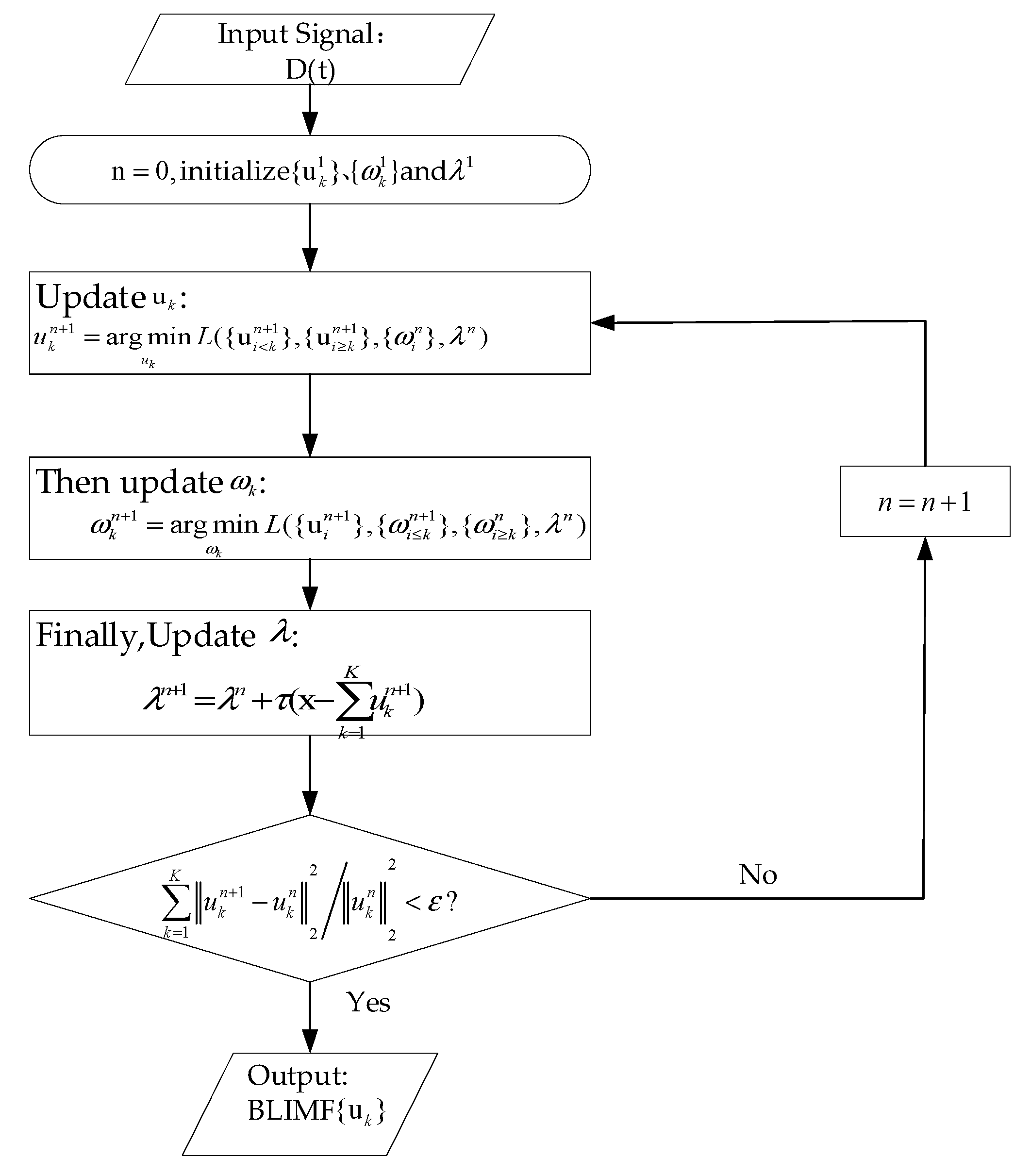

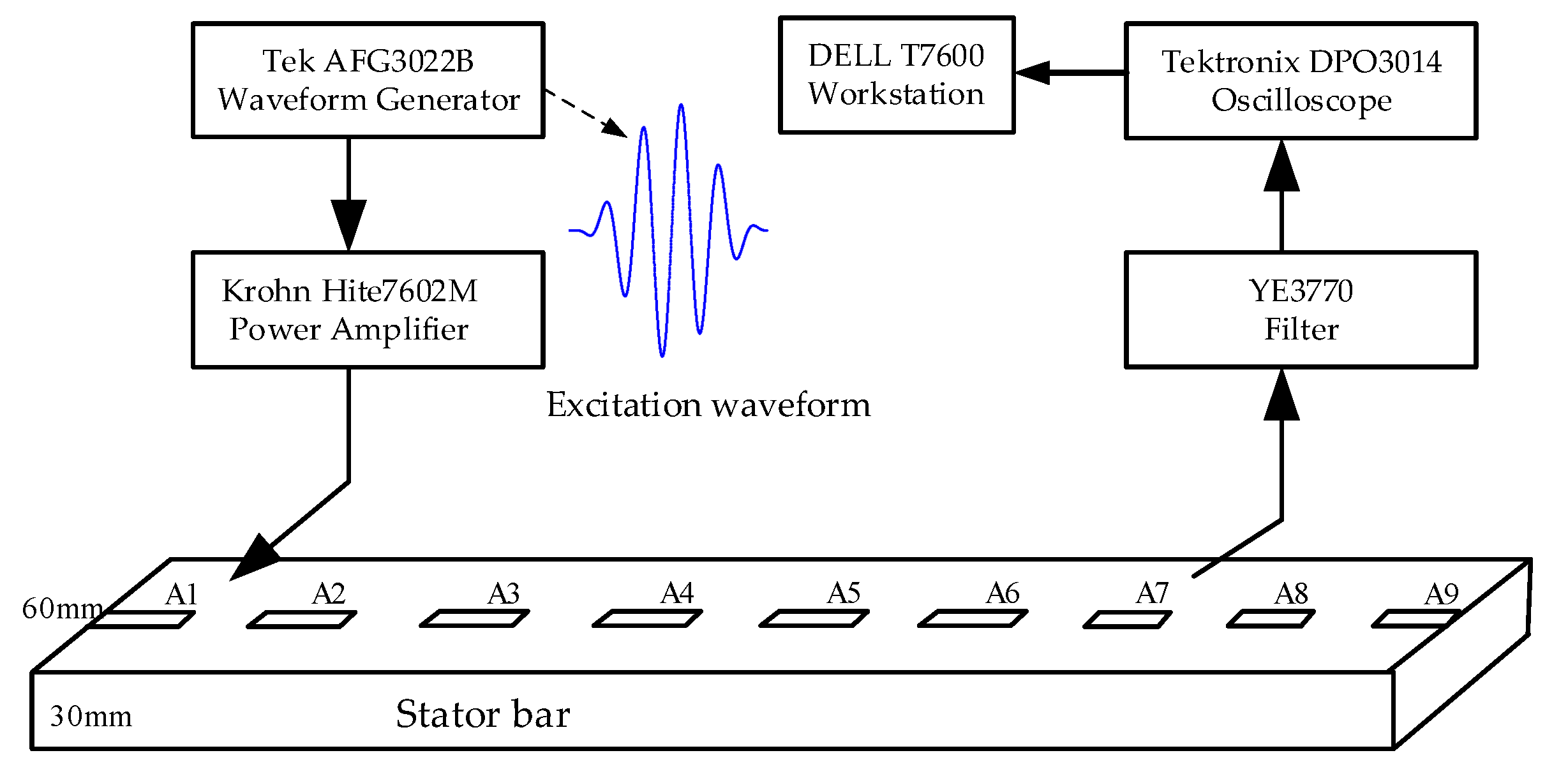
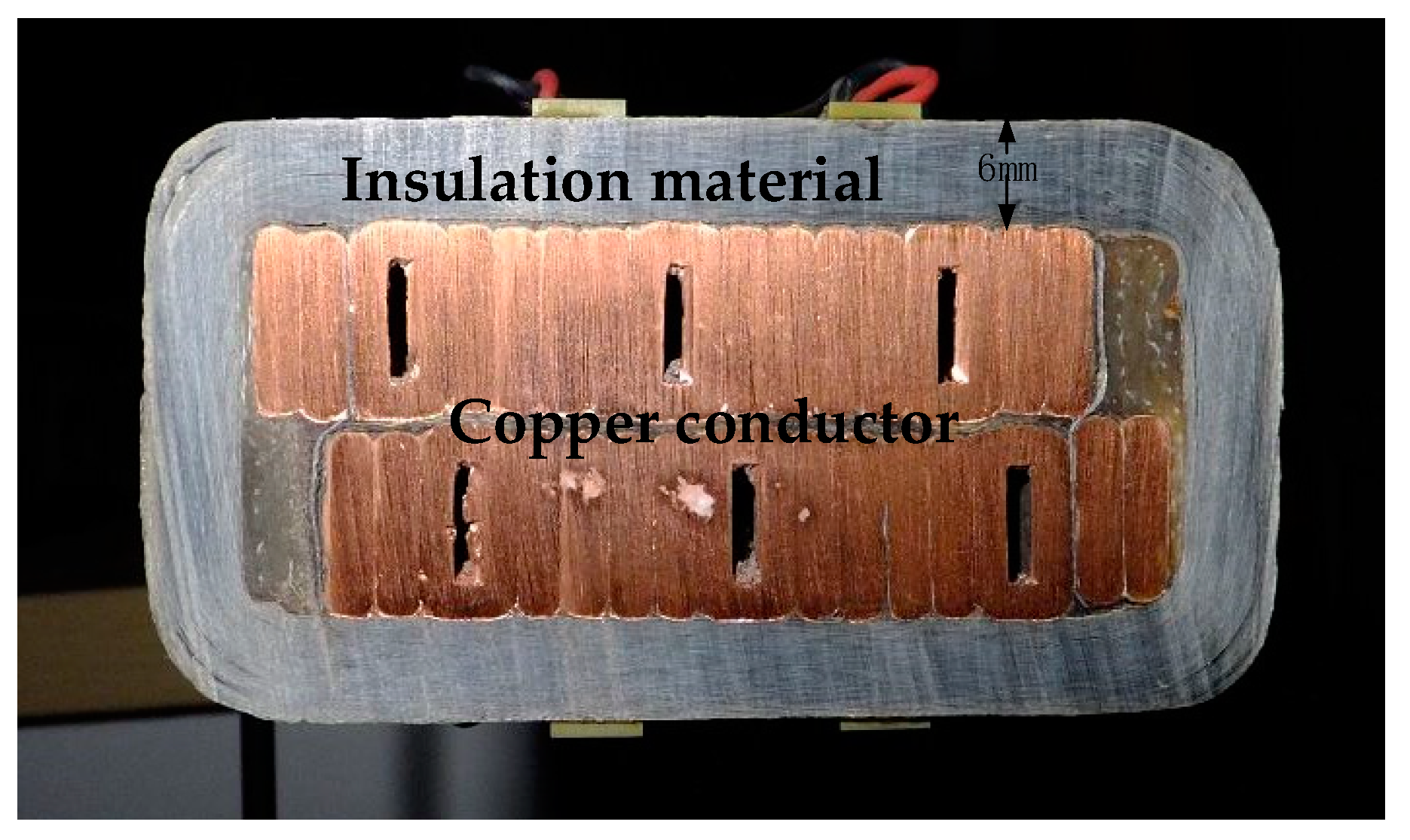
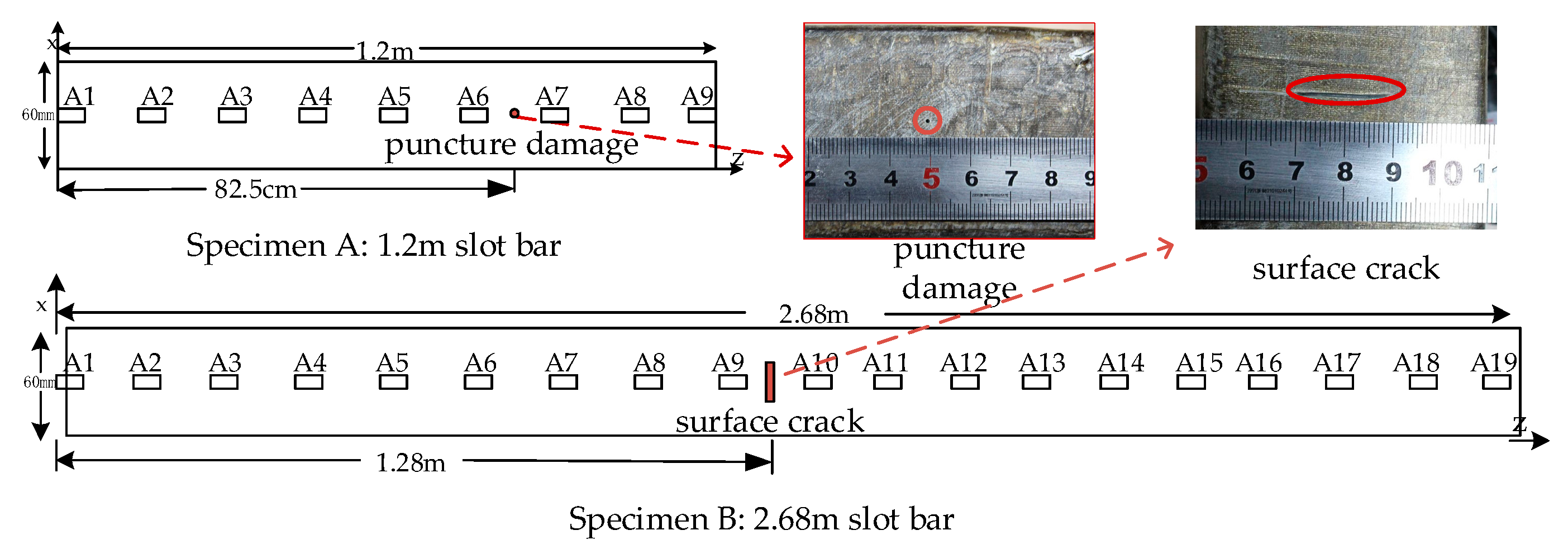
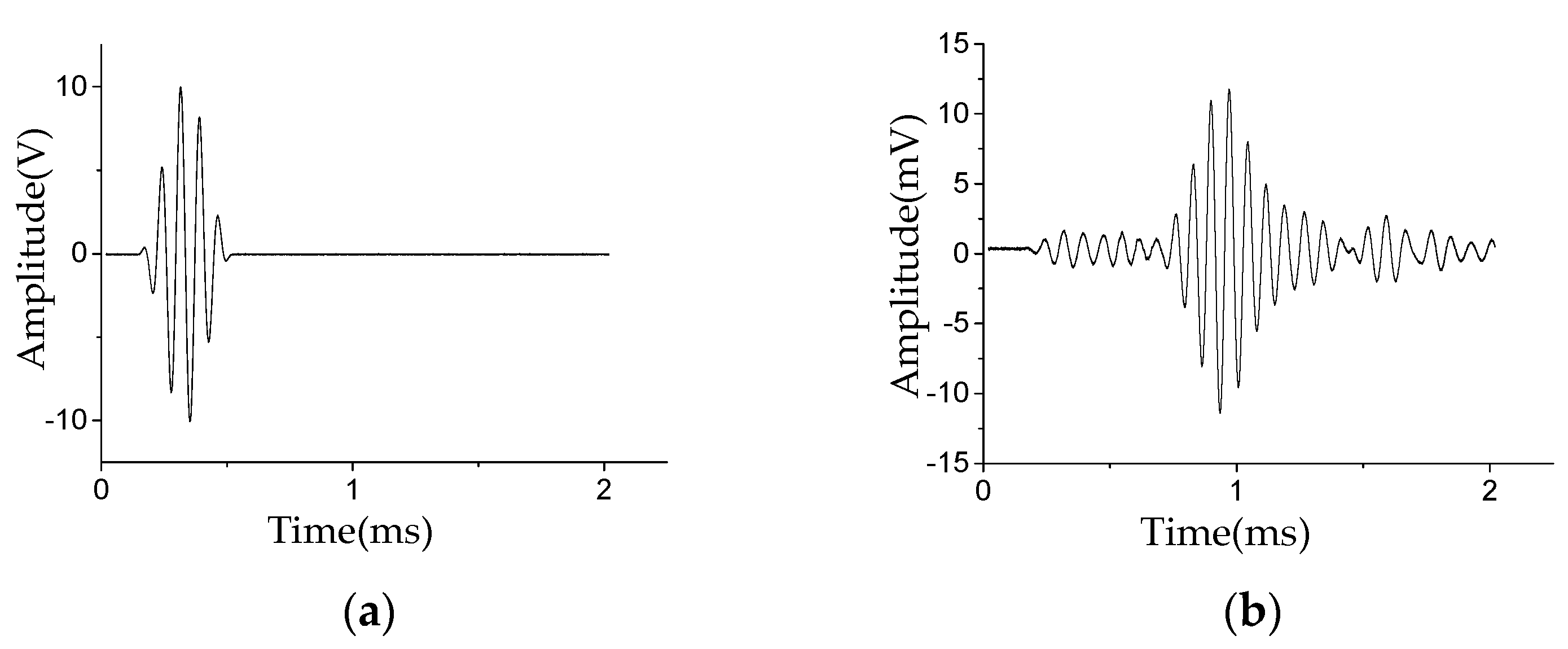


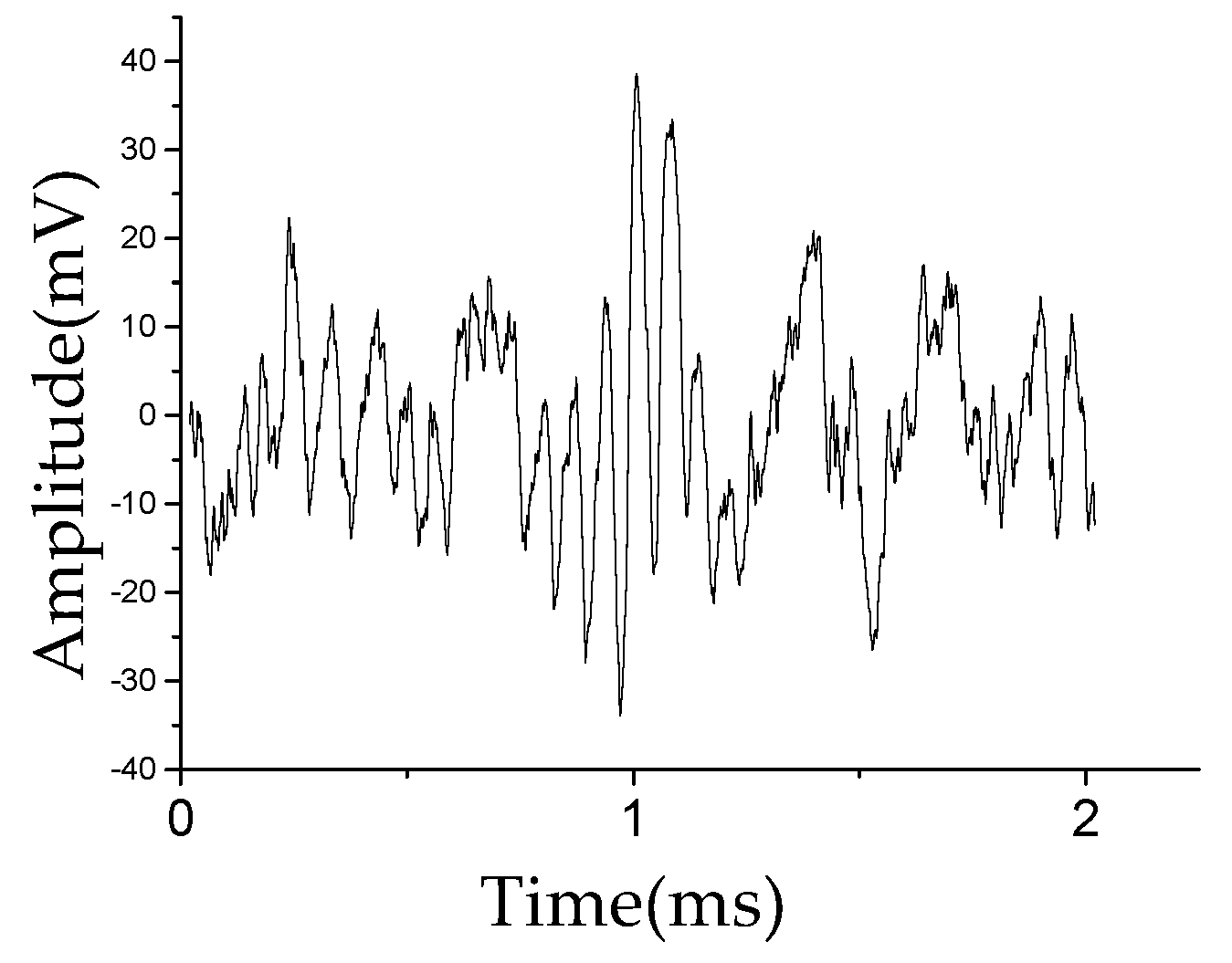
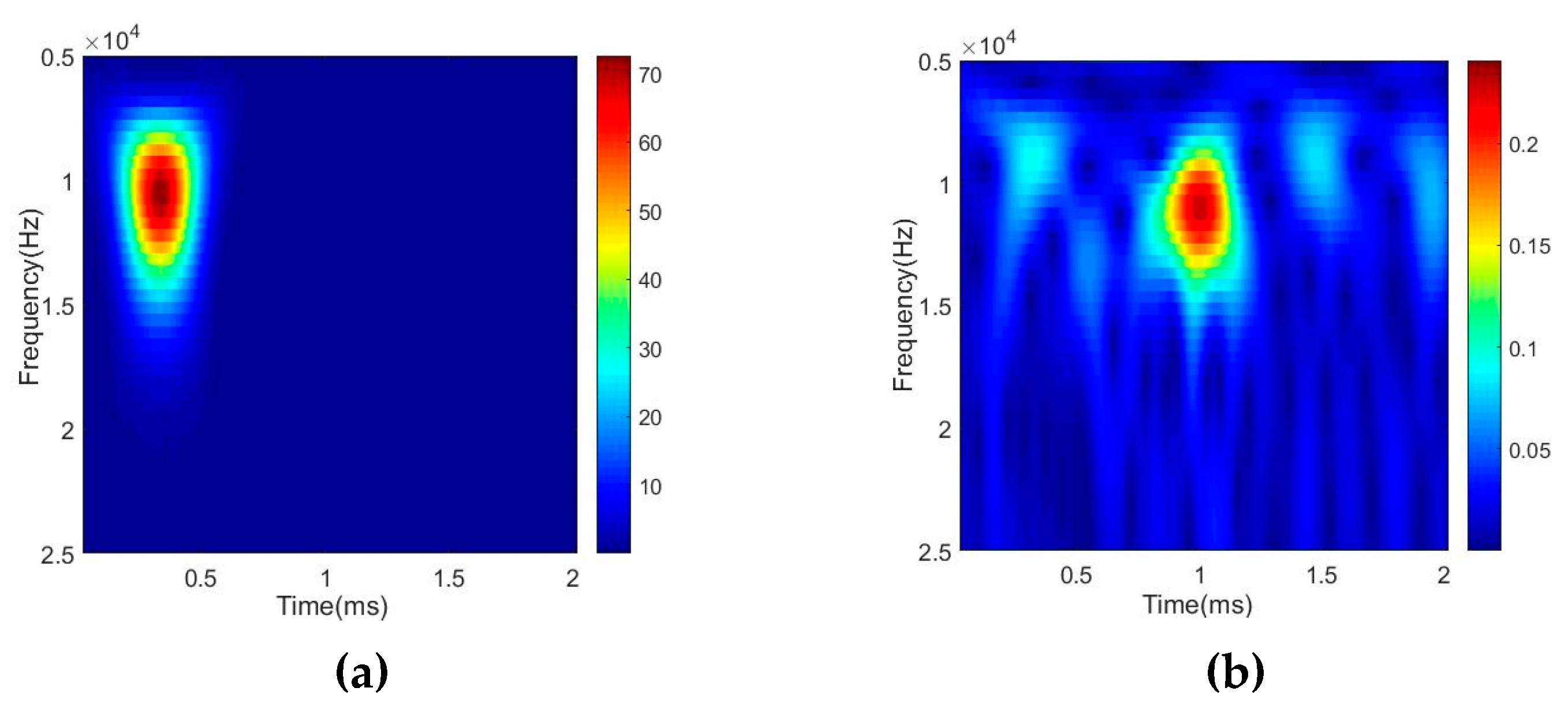
| Sub-Component Category | BLIMF1 | BLIMF2 | BLIMF3 | BLIMF4 | BLIMF5 |
|---|---|---|---|---|---|
| cross-correlation coefficient | 0.88 | 0.21 | 0.21 | 0.21 | 0.21 |
| Noise Type | Damage Location (cm) | Specimen A | |||
|---|---|---|---|---|---|
| Without Denoise | VMD | ||||
| Identified Location (cm) | Relative Error (%) | Identified Location (cm) | Relative Error (%) | ||
| 10 dB white noise | 82.50 | 90.25 | 9.39 | 86 | 4.24 |
| 5 dB white noise | 82.50 | 90.64 | 9.87 | 86.29 | 4.59 |
| −3 dB white noise | 82.50 | 91.01 | 10.32 | 87.82 | 6.45 |
| 10 dB environment noise | 82.50 | 91.09 | 10.41 | 86.08 | 4.34 |
| 5 dB environment noise | 82.50 | 92 | 11.52 | 86.14 | 4.41 |
| −3 dB environment noise | 82.50 | 95.1 | 15.27 | 87.75 | 6.36 |
| 10 dB mixed noise | 82.50 | 91.24 | 10.59 | 86.78 | 5.19 |
| 5 dB mixed noise | 82.50 | 92.15 | 11.70 | 87.37 | 5.90 |
| −3 dB mixed noise | 82.50 | 98.2 | 19.03 | 88.06 | 6.74 |
| Noise type | Damage Location (cm) | Specimen A | |||
|---|---|---|---|---|---|
| Hilbert | Wavelet Transform | ||||
| Identified Location (cm) | Relative Error (%) | Identified Location (cm) | Relative Error (%) | ||
| 10 dB white noise | 82.50 | 90.68 | 9.91 | 85.66 | 3.83 |
| 5 dB white noise | 82.50 | 90.98 | 10.29 | 86.21 | 4.50 |
| −3 dB white noise | 82.50 | 91.21 | 10.56 | 86.84 | 5.26 |
| 10 dB environment noise | 82.50 | 86.51 | 4.86 | 85.92 | 3.42 |
| 5 dB environment noise | 82.50 | 86.66 | 5.04 | 86.15 | 4.42 |
| −3 dB environment noise | 82.50 | 88.26 | 6.98 | 87.43 | 5.98 |
| 10 dB mixed noise | 82.50 | 90.83 | 10.09 | 86.54 | 4.90 |
| 5 dB mixed noise | 82.50 | 91.29 | 10.65 | 87.47 | 6.02 |
| −3 dB mixed noise | 82.50 | 91.74 | 11.2 | 88.2 | 6.91 |
| Noise Type | Damage Location (cm) | Specimen B | |||
|---|---|---|---|---|---|
| Without Denoise | VMD | ||||
| Identified Location (cm) | Relative Error (%) | Identified Location (cm) | Relative Error (%) | ||
| 10 dB white noise | 140.00 | 133.30 | 4.79 | 134.88 | 3.66 |
| 5 dB white noise | 140.00 | 132.11 | 5.64 | 134.78 | 3.73 |
| −3 dB white noise | 140.00 | 131.97 | 5.74 | 134.45 | 3.97 |
| 10 dB environment noise | 140.00 | 133.50 | 4.64 | 135.07 | 3.52 |
| 5 dB environment noise | 140.00 | 133.08 | 4.94 | 134.79 | 3.72 |
| −3 dB environment noise | 140.00 | 132.87 | 5.09 | 133.75 | 4.46 |
| 10 dB mixed noise | 140.00 | 133.08 | 4.94 | 134.66 | 3.82 |
| 5 dB mixed noise | 140.00 | 132.53 | 5.34 | 134.31 | 4.07 |
| −3 dB mixed noise | 140.00 | 131.14 | 6.33 | 133.13 | 4.91 |
| Noise Type | Damage Location (cm) | Specimen B | |||
|---|---|---|---|---|---|
| Hilbert | Wavelet Transform | ||||
| Identified Location (cm) | Relative Error (%) | Identified Location (cm) | Relative Error (%) | ||
| 10 dB white noise | 140.00 | 133.49 | 4.65 | 134.88 | 3.66 |
| 5 dB white noise | 140.00 | 133.03 | 4.98 | 134.78 | 3.73 |
| −3 dB white noise | 140.00 | 131.82 | 5.84 | 134.45 | 3.97 |
| 10 dB environment noise | 140.00 | 133.83 | 4.41 | 135.07 | 3.52 |
| 5 dB environment noise | 140.00 | 133.62 | 4.56 | 134.79 | 3.72 |
| −3 dB environment noise | 140.00 | 147.53 | 5.38 | 133.75 | 4.46 |
| 10 dB mixed noise | 140.00 | 133.48 | 4.66 | 134.66 | 3.82 |
| 5 dB mixed noise | 140.00 | 147.14 | 5.10 | 134.31 | 4.07 |
| −3 dB mixed noise | 140.00 | 148.44 | 6.03 | 133.13 | 4.91 |
© 2020 by the authors. Licensee MDPI, Basel, Switzerland. This article is an open access article distributed under the terms and conditions of the Creative Commons Attribution (CC BY) license (http://creativecommons.org/licenses/by/4.0/).
Share and Cite
Li, R.; Luo, J.; Hu, B. Lamb Wave-Based Damage Localization Feature Enhancement and Extraction Method for Stator Insulation of Large Generators Using VMD and Wavelet Transform. Sensors 2020, 20, 4205. https://doi.org/10.3390/s20154205
Li R, Luo J, Hu B. Lamb Wave-Based Damage Localization Feature Enhancement and Extraction Method for Stator Insulation of Large Generators Using VMD and Wavelet Transform. Sensors. 2020; 20(15):4205. https://doi.org/10.3390/s20154205
Chicago/Turabian StyleLi, Ruihua, Jing Luo, and Bo Hu. 2020. "Lamb Wave-Based Damage Localization Feature Enhancement and Extraction Method for Stator Insulation of Large Generators Using VMD and Wavelet Transform" Sensors 20, no. 15: 4205. https://doi.org/10.3390/s20154205





